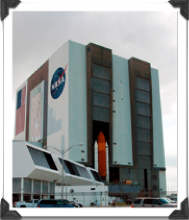 The Vehicle Assembly Building, or VAB, at NASA’s Kennedy Space Center in Florida is undergoing renovations to accommodate future launch vehicles. Space shuttle-era work platforms have been removed and accommodations are being made to support a variety of future spacecraft, including NASA’s Space Launch System heavy-lift rocket. The changes are part of a centerwide modernization and refurbishment initiative in preparation for the next generation of human spaceflight.
The Vehicle Assembly Building, or VAB, at NASA’s Kennedy Space Center in Florida is undergoing renovations to accommodate future launch vehicles. Space shuttle-era work platforms have been removed and accommodations are being made to support a variety of future spacecraft, including NASA’s Space Launch System heavy-lift rocket. The changes are part of a centerwide modernization and refurbishment initiative in preparation for the next generation of human spaceflight.
One of the largest buildings in the world, the VAB was constructed in the mid-1960s to support stacking of the Apollo Saturn V rockets that took American astronauts to the moon. In the late 1970s, the facility was refurbished to accommodate the space shuttle.
To read more about this renovation, visit https://www.nasa.gov/exploration/systems/ground/vab_platforms_removed.html.
This article serves as a good extension to the NASA Explorer Schools featured lesson, Linear Regression: Exploring Space Through Math—Space Shuttle Ascent. To access this lesson, first log into the NES Virtual Campus home page.


 Did you know you may be able see the International Space Station from your home? As the third brightest object in the sky, after the sun and moon, the space station is easy to see if you know where and when to look for it.
Did you know you may be able see the International Space Station from your home? As the third brightest object in the sky, after the sun and moon, the space station is easy to see if you know where and when to look for it.
